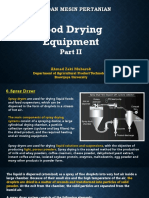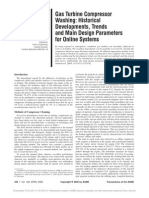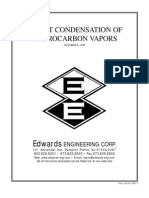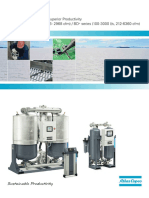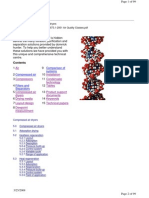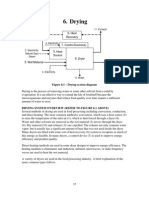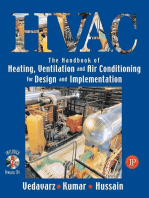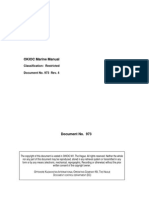PC Program Developed For Estimating Pipeline Drying Time: Save Article Instructions Close
PC Program Developed For Estimating Pipeline Drying Time: Save Article Instructions Close
Uploaded by
scrbdgharaviCopyright:
Available Formats
PC Program Developed For Estimating Pipeline Drying Time: Save Article Instructions Close
PC Program Developed For Estimating Pipeline Drying Time: Save Article Instructions Close
Uploaded by
scrbdgharaviOriginal Title
Copyright
Available Formats
Share this document
Did you find this document useful?
Is this content inappropriate?
Copyright:
Available Formats
PC Program Developed For Estimating Pipeline Drying Time: Save Article Instructions Close
PC Program Developed For Estimating Pipeline Drying Time: Save Article Instructions Close
Uploaded by
scrbdgharaviCopyright:
Available Formats
PC program developed for estimating pipeline drying time - Save this page
Page 1 of 8
Save Article Instructions Close
PC program developed for estimating pipeline drying time
Abdulghani A. Al-Farayedhi King Fahd University of Petroleum & Minerals Dhahran, Saudi Arabia Equations box [273,114 bytes] Example problem data [74,304 bytes]
A computer program has been developed that enables process engineers and designers to estimate the total drying time required for removing water from pipelines. The program (PIPE.DRY) determines the total amount of water to be removed from a pipeline and the total time required to dry the pipeline. It also estimates the volume of the desiccant and the size of the bed required for the operation. Design procedures involve calculations for volume and mass of water in the pipeline, volumetric as well as mass flow rate of dry air, moisture content of saturated air and dry air, and total drying time in hours and days. These procedures also involve calculations for total water adsorbed, volume of desiccant, and size of bed.
http://www.ogj.com/articles/print/volume-97/issue-7/in-this-issue/pipeline/pc-program-developed-for-estimating-pipeline-drying-time._s... 2013/01/21
PC program developed for estimating pipeline drying time - Save this page
Page 2 of 8
The thickness of the water film, the volumetric flow rate of dry air, the dew point temperature of the dry air, and the length of the pipeline, all influence the time required for drying the pipeline. The useful design capacity of the desiccant and its density influence the size of the bed.1 The equations box contains the required equations and terms; the nomenclature box provides definitions. The analysis is based upon the following assumptions: The dry air and the moisture-containing air obey all the laws of ideal gases. The pipe-wall temperature is assumed to be the same as the ambient temperature. Water-film thickness on the pipeline wall is uniform. The dew point temperature inside the pipe is the same as the pipe-wall temperature. The influence of the temperature drop of the air as a result of moisture evaporation from the pipe wall on the drying time is neglected. The ratio of the length of the bed to the diameter of the bed is assumed as 4.
Pipeline drying
Saudi Arabia has several ports and oil-export terminals connected by pipelines to oil fields and gas-processing plants. For example, crude oil is piped to Yanbu from the Abqaiq oil fields in the east through a 1,200-km pipeline.2 A 20-in. (50-cm) OD, 380-km pipeline has been laid from Dhahran to Riyadh to improve refined-product distribution. Pipeline drying is a growing problem for the operation of pipelines transporting petroleum products and natural gas. Hydrostatic testing is usually conducted in the oil and gas industry to check the pipe strength and leak tightness.3 The water that remains in a pipeline after the test is normally removed by a pig, a foam plastic cylinder or sphere a little wider than the pipeline diameter. After pigging operation, a very thin layer of water, usually 50-100 ?m thick, remains on the inner surface of the pipeline. Drying the inside surface of the pipeline is necessary to prevent the formation of hydrates with hydrocarbons. The white granular scales caused by this mechanism block equipment and connecting lines. Moreover, carbon dioxide and hydrogen sulfide in conjunction with water vapor enhance corrosion in pipelines and valves.4
Low dew point air
http://www.ogj.com/articles/print/volume-97/issue-7/in-this-issue/pipeline/pc-program-developed-for-estimating-pipeline-drying-time._s... 2013/01/21
PC program developed for estimating pipeline drying time - Save this page
Page 3 of 8
The water content in air is commonly expressed in terms of a humidity ratio (gram of water/kilogram of dry air). Another useful method of indicating the water content in air is in terms of the dew point: the temperature to which the air must be cooled before it becomes saturated with water vapor. Dew point is a more direct indication of dehydration effectiveness than absolute water content. Water that remains in the pipeline can be removed by any of the following techniques: ventilative drying, vacuum drying, absorptive drying, or use of nitrogen, methanol, and natural gas.5 For economic, technical, and safety reasons, the last three methods have generally proven unsatisfactory. The ventilative drying process (OGJ, June 11, 1984, p. 114) offers the following advantages: The equipment cost is relatively low. It does not require skilled personnel. It enables attaining very high drying levels. It does not require the availability of natural gas and inert gas. In this discussion, the process of ventilative drying is investigated for its simplicity and practicality. The process is based on passing dry air through the pipeline for a period of time. The principle of drying is simple. As air with a low dew point blows into the pipeline, moisture is absorbed in the dry air stream because it has a low partial pressure of water vapor. The performance of ventilative drying depends mainly on the potential for mass transfer: the difference in water-vapor pressure between the water film on the inner side of the pipeline and the dry-air stream. A pipeline's drying time decreases as the potential of mass transfer increases. Several techniques can produce low dew point air: Direct cooling Compression followed by cooling Absorption Adsorption. To obtain very low dew point air, additional dehydration by absorption or adsorption is required in direct cooling and compression followed by cooling.6
http://www.ogj.com/articles/print/volume-97/issue-7/in-this-issue/pipeline/pc-program-developed-for-estimating-pipeline-drying-time._s... 2013/01/21
PC program developed for estimating pipeline drying time - Save this page
Page 4 of 8
Fig. 1 [65,072 bytes] presents a psychrometric of the dehumidification process for direct cooling. In this method, air passes through the cooling coil where the dry-bulb temperature of the moist air decreases, while the moisture content remains constant. As moisture begins to condense out of the air onto the cooling coil, the dry-bulb temperature continues to decrease, resulting in a simultaneous decrease in the moisture content or dew point temperature (Line 1-2 in Fig. 1). Although dehumidification by refrigeration is quite effective at high temperatures, it becomes less effective at lower temperatures (0-5 C.) because the condensed moisture will freeze on the cooling coil. For example, a drop of 1 C. in the temperature of saturated air at 7 C. removes less than one-third of the amount of water vapor that a corresponding drop removes from 29 C. saturated air.
Absorption, adsorption
Some granular solids have an affinity for water. When air flows through a bed of such solids, the water is retained on their surfaces in a process called adsorption. Water vapor may also be removed from air when it is exposed to certain liquids that have an affinity for water. When water vapor is removed by this process, the operation is called absorption. The liquid or solid with an affinity for water and used in either process is the desiccant. Each process has particular advantages, disadvantages, and degree of usefulness; all produce low dew point air. Fig. 1 also presents the desiccant dehumidification process. This system, with no heat added or removed, will then be adiabatic (Line 1-3 of Fig. 1). The process increases the dry-bulb temperature of the moist air. For solid-desiccant materials, this increase is a result of the heat of adsorption that consists of the latent heat of vaporization of the adsorbed liquid plus an additional heat of wetting. In liquid-desiccant systems, air passes through a cooling coil or through a contact surface such as cooling-tower packing that has been wetted with liquid desiccant such as lithium chloride, lithium bromide, calcium chloride, or triethylene glycol. The desiccant absorbs moisture from the air, making the liquid solution more dilute. The weak desiccant is sent through a heater and sprayed into a reactivation air stream. The reactivation air carries away water vapor given off by the warm desiccant so that the reconcentrated desiccant can be used for ventilative drying again. It is possible to achieve an equilibrium water dew point of -60 C. with triethylene glycol.
http://www.ogj.com/articles/print/volume-97/issue-7/in-this-issue/pipeline/pc-program-developed-for-estimating-pipeline-drying-time._s... 2013/01/21
PC program developed for estimating pipeline drying time - Save this page
Page 5 of 8
The disadvantages of liquid-desiccant systems are corrosion, weight, and the need to control liquid sloshing and entrainment.
Solid systems
In solid-desiccant systems, air is circulated through a bed of absorptive material such as silica gel, alumina, molecular sieves, lithium chloride, or zeolite. The actual outlet dew point depends on the desiccant chosen and design of the unit. The dew points are achievable with desiccants (Table 1 [15,799 bytes]). Silica gel desiccant is widely used in industrial drying processes and hence the same is considered for this study. Silica gel is a hard, granular, porous product made from the gel precipitated by acid treatment of sodium silicate solution. Its moisture content before use varies 4-7%; it is used principally for dehydration of air and other gases. Solid-desiccant materials are arranged in a variety of ways in desiccant-dehydration systems. A large desiccant surface area in contact with the air stream is desirable, and a way to bring regeneration air to the desiccant material is necessary. Three types of solid-desiccant dehumidifiers are available commercially: 1. Rotary-bed dehumidifier 2. Desiccant wheel dehumidifier 3. Dual-bed packed tower dehumidifier. In a horizontal rotating-bed dehumidifier, granules of desiccant are held in perforated rotating trays which rotate between the process and regeneration air streams. Like the horizontal rotating bed, the desiccant wheel rotates continuously between the process and regeneration air streams. The wheel is constructed by placement of a thin layer of desiccant material on a plastic or metal support structure. The support structure, or core, is formed so that the wheel consists of many small parallel channels coated with desiccant. The channels are small enough to ensure laminar flow through the wheel. Some kind of sliding seal must be used on the face of the wheel to separate the two streams. Typical rotation speeds are between 6 and 20 rotations/hr. These two types of dehumidifiers are commonly used for commercial space-conditioning applications. For the present study, a packed-bed configuration is chosen. Fig. 2 [72,828 bytes] shows the schematic of a dual-bed packed tower dehumidification
http://www.ogj.com/articles/print/volume-97/issue-7/in-this-issue/pipeline/pc-program-developed-for-estimating-pipeline-drying-time._s... 2013/01/21
PC program developed for estimating pipeline drying time - Save this page
Page 6 of 8
system suitable for pipeline-drying applications. As the ambient (process) air passes through one tower, the reactivation air is routed through the other tower. When the desiccant in the first tower becomes saturated, the air streams are switched. The drying system must be designed with a blower system to handle the friction losses of the pipeline as shown in the figure. Air-to-air heat exchangers may be added to cool the warm air leaving the process section of the unit and preheat the air entering reactivation. Either heat pipes or plate-type heat exchangers may be used for this purpose. Air filters are an important component of solid-desiccant systems. Dust or other contaminants can interfere with the adsorption of water vapor and quickly degrade the system performance. The capacity of a desiccant for water is expressed normally in mass of water adsorbed per mass of desiccant. The useful capacity of a desiccant is defined as the design capacity that recognizes loss of desiccant capacity with time as determined by experience and economic considerations and the fact that all of the desiccant bed can never be fully used.7
Example
In this example, a ventilative drying system that uses a solid desiccant (silica gel) as the adsorbent to produce the dry air is used to estimate the drying time required for a pipeline operating under the input data shown in the accompanying example box. PIPE.DRY estimates the total time required to dry the pipeline for the given operating conditions, length of the pipeline, velocity of dry air, and physical properties. The program also estimates the volume of the desiccant required. The diameter of the bed is calculated based on the assumption that the ratio of the length of the bed to the diameter of the bed is 4. The example box shows the input data and computer output with the dry air flow rate of 4,210.75 kg/hr and the moisture-removal capacity of the dry air of 32.53 kg/hr. The total drying time required for drying the pipeline is 204.47 hr or 8.52 days.
Acknowledgments
The author is grateful for the financial support and facilities provided by the King Fahd University of Petroleum and Minerals.
References
http://www.ogj.com/articles/print/volume-97/issue-7/in-this-issue/pipeline/pc-program-developed-for-estimating-pipeline-drying-time._s... 2013/01/21
PC program developed for estimating pipeline drying time - Save this page
Page 7 of 8
1. Syed, Younus Ahmed, Gandhidasan, P., and Al-Farayedhi, A.A., "Pipeline drying using dehumidified air with low dew point temperature," Applied Thermal Engineering, Vol. 18, No. 5, 1998, pp. 231-44. 2. Arab Oil & Gas Directory, published by Arab Petroleum Research Center, Paris, 1997. 3. LaCasse, G.A., and Ingvordsen, T., "Desiccant drying of gas pipelines," Material Performance, Vol. 27, September 1988, pp. 48-51. 4. Aitani, A.M., "Sour natural gas drying," Hydrocarbon Processing, April 1993, pp. 67-73. 5. Gorislavets, V.M., and Sverdlov, A.A., "Numerical investigation of the process of ventilative drying of a pipeline," Journal of Engineering Physics, Vol. 60, 1991, pp. 615-23. 6. Ikoku, Chi U., Natural Gas Engineering, Tulsa, PennWell Publishing Co., 1980, p. 147. 7. Campbell, John M., Gas Conditioning and Processing, 6th Edition, Vol. 2, Campbell Petroleum Series, 1984, p. 341. Editor's note: OGJ subscribers in the U.S. may obtain a copy of the PIPE.DRY program by sending a blank 3.5 diskette formatted to MS DOS and a self-addressed, postage-paid or stamped return diskette mailer to: Pipeline/Gas Processing Editor Oil & Gas Journal 1700 West Loop South, Suite 1000 Houston, TX 77027-3006 OGJ subscribers outside the U.S. may send the diskette and return mailer without return postage to the same address. This offer expires on June 30, 1999.
The Author
Abdulghani A. Al-Farayedhi is assistant professor and chairman of the mechanical engineering department at King Fahd University of Petroleum and Minerals, Dhahran, Saudi Arabia. Al-Farayedhi joined the department as a graduate assistant in 1976 after he received a BS in mechanical engineering. He obtained an MS in 1979 and served as a lecturer in the department. In 1987, he received a PhD in thermal sciences from the University of Colorado, Boulder.
http://www.ogj.com/articles/print/volume-97/issue-7/in-this-issue/pipeline/pc-program-developed-for-estimating-pipeline-drying-time._s... 2013/01/21
PC program developed for estimating pipeline drying time - Save this page
Page 8 of 8
Copyright 1999 Oil & Gas Journal. All Rights Reserved.
To access this Article, go to: http://www.ogj.com/content/ogj/en/articles/print/volume-97/issue-7/in-this-issue/pipeline/pc-program-developed-for-estimating-pipeline-dryingtime.html
http://www.ogj.com/articles/print/volume-97/issue-7/in-this-issue/pipeline/pc-program-developed-for-estimating-pipeline-drying-time._s... 2013/01/21
You might also like
- 5 Steps To Chiller EfficiencyDocument10 pages5 Steps To Chiller EfficiencyEdmund YoongNo ratings yet
- Study of A Refrigeration Unit (R633)Document52 pagesStudy of A Refrigeration Unit (R633)mahbub133294% (17)
- Compressed Air DryersDocument15 pagesCompressed Air Dryersmanpreetsodhi08100% (1)
- Drying of Pipelines Prior To Commissioning - CEPS A.SDocument6 pagesDrying of Pipelines Prior To Commissioning - CEPS A.Sim4uim4uim4uim4uNo ratings yet
- h2 Dew PointDocument4 pagesh2 Dew Pointgeddam0610882592% (13)
- SOP For Condenser Vacuum SystemDocument15 pagesSOP For Condenser Vacuum SystemAbeer arif100% (1)
- 5090 BIOLOGY: MARK SCHEME For The October/November 2014 SeriesDocument13 pages5090 BIOLOGY: MARK SCHEME For The October/November 2014 Seriesrania moomal100% (1)
- Assessment of Ultra Filtration and Vacuum Evaporation On Whey Protein ConcentrationDocument9 pagesAssessment of Ultra Filtration and Vacuum Evaporation On Whey Protein ConcentrationAndre CharlesNo ratings yet
- Pipeline DryingDocument14 pagesPipeline DryingMAHESH CHANDNo ratings yet
- Enhancement of The Processes of Desiccant AirDocument10 pagesEnhancement of The Processes of Desiccant AiresatjournalsNo ratings yet
- Pipeline DryingDocument2 pagesPipeline DryingAdan Farias de PinaNo ratings yet
- Pipeline DryingDocument2 pagesPipeline DryingAriel Anasco100% (2)
- Moisture MeasurementDocument8 pagesMoisture MeasurementnimasinaNo ratings yet
- HMR 3 PDFDocument21 pagesHMR 3 PDFRonak ShahNo ratings yet
- 10.1007 - s10163 012 0040 6 PDFDocument9 pages10.1007 - s10163 012 0040 6 PDF-Joshua Anak PuNkyNo ratings yet
- Unit 5Document4 pagesUnit 5Aynesh ShahNo ratings yet
- Project Standards and Specifications Dryers Systems Rev01Document18 pagesProject Standards and Specifications Dryers Systems Rev01Christian CleofasNo ratings yet
- Alat Pengering, IIDocument18 pagesAlat Pengering, IIReza Luckyvianto RamadhanNo ratings yet
- A_Study_on_Mechanism_of_Evaporation_Reduction_of_DDocument17 pagesA_Study_on_Mechanism_of_Evaporation_Reduction_of_DShaheer KhanNo ratings yet
- The Impact of Air Cooled Condensers On Plant Design and OperationsDocument12 pagesThe Impact of Air Cooled Condensers On Plant Design and Operationsandi_babyNo ratings yet
- Compressor WashingDocument10 pagesCompressor Washingsamil68100% (3)
- Industrial Dehumidification Part 1Document20 pagesIndustrial Dehumidification Part 1Quora EarningNo ratings yet
- Humidification With Desiccant WheelsDocument11 pagesHumidification With Desiccant WheelsSelvaraji MuthuNo ratings yet
- Applied Thermal Energy 2012 1Document30 pagesApplied Thermal Energy 2012 1Walter J Naspirán CastañedaNo ratings yet
- Basics - Dew Point Measurement - P60 P63 PDFDocument4 pagesBasics - Dew Point Measurement - P60 P63 PDFAnonymous o38k1iEKFNo ratings yet
- Direct Condensation of Hydrocarbon VaporsDocument10 pagesDirect Condensation of Hydrocarbon VaporsManju Lata Kapur100% (1)
- CryogenicDocument19 pagesCryogeniczohaib_farooq100% (1)
- Designing Wet Duct/stack Systems For Coal-Red Plants: Wetter Is Better - . - ButDocument10 pagesDesigning Wet Duct/stack Systems For Coal-Red Plants: Wetter Is Better - . - ButvatsalNo ratings yet
- Cooling Tower ManualDocument11 pagesCooling Tower Manualياسر نديمNo ratings yet
- Admapn016en 0905Document8 pagesAdmapn016en 0905Angel Daniel GarciajoyaNo ratings yet
- Molecular Sieve Dehydration Optimization PDFDocument24 pagesMolecular Sieve Dehydration Optimization PDFمصطفى العباديNo ratings yet
- Gluesenkamp 2020Document22 pagesGluesenkamp 2020dangananrenz4No ratings yet
- Gas Dehydrators LessonsDocument20 pagesGas Dehydrators LessonsBinarga SatriaNo ratings yet
- Properly Employ Overhead Condensers For Vacuum ColumnsDocument8 pagesProperly Employ Overhead Condensers For Vacuum ColumnsmrtiemannNo ratings yet
- Atlas CopcoDocument9 pagesAtlas Copcojrsdve100% (1)
- Process Transients AnalysisDocument25 pagesProcess Transients AnalysisOtis ArmsNo ratings yet
- Air DryersDocument99 pagesAir Dryersapi-384214360% (5)
- CAGI Article Types of Compressed Air DryersDocument5 pagesCAGI Article Types of Compressed Air DryersHalima LAARARINo ratings yet
- Conceptual Analysis of Desalination System Working On Humidify and Dehumidify Technique Using Solar Air HeaterDocument7 pagesConceptual Analysis of Desalination System Working On Humidify and Dehumidify Technique Using Solar Air Heateraaarun1010No ratings yet
- Energy Audit of A Fiberboard Drying Production Line Using Simprosys SoftwareDocument17 pagesEnergy Audit of A Fiberboard Drying Production Line Using Simprosys SoftwareDHe Vic'zNo ratings yet
- 308 HRSG 2Document5 pages308 HRSG 2Eduardo Sarria SuazoNo ratings yet
- DsairelimDocument10 pagesDsairelimGerman Felipe TorresNo ratings yet
- Production and Purification of Water From Humid AiDocument7 pagesProduction and Purification of Water From Humid Aikejikamal9No ratings yet
- Drying Performance of A Thumbler Dryer With CondenserDocument5 pagesDrying Performance of A Thumbler Dryer With CondenserZaharanNo ratings yet
- Compressed Air Dryers: Recommended Dew PointsDocument11 pagesCompressed Air Dryers: Recommended Dew Pointsjenish parekhNo ratings yet
- Sourcebook Chapter6 PDFDocument7 pagesSourcebook Chapter6 PDFtapanshahNo ratings yet
- Membrane DryerDocument4 pagesMembrane DryerMuhammad SaifNo ratings yet
- Membranes 05 00722Document17 pagesMembranes 05 00722JubairAhmedNo ratings yet
- Admapn016en 0905Document8 pagesAdmapn016en 0905Hendrias Ari SujarwoNo ratings yet
- 03 Preparation of Compressed AirDocument3 pages03 Preparation of Compressed AirNatsuko KayamaNo ratings yet
- Compressed Air Drying PDFDocument29 pagesCompressed Air Drying PDFmaddukuri jagadeesh babu100% (2)
- Energy Efficiency in Thermal UtilitiesDocument14 pagesEnergy Efficiency in Thermal UtilitiesJoeb DsouzaNo ratings yet
- How Choose Vacuum DryerDocument4 pagesHow Choose Vacuum DryerGomatheeswariNo ratings yet
- Icr0143slv Iir Iif ConfDocument8 pagesIcr0143slv Iir Iif ConfMuhammad AhmadNo ratings yet
- Quality Air Solutions: Heatless Desiccant Dryers OverviewDocument31 pagesQuality Air Solutions: Heatless Desiccant Dryers OverviewMohamad Bahrodin100% (1)
- Hpac Pools Article2Document6 pagesHpac Pools Article2Moriyasu Nguyen100% (1)
- Advantages of Solid DesicantsDocument8 pagesAdvantages of Solid DesicantscclaremontNo ratings yet
- ProSep Company Profile Brochures PDFDocument42 pagesProSep Company Profile Brochures PDFCSNo ratings yet
- Equipment and System Dehydrating, Charging, and Testing: Related Commercial ResourcesDocument7 pagesEquipment and System Dehydrating, Charging, and Testing: Related Commercial ResourcesBurning TrainNo ratings yet
- Advances in Air Conditioning Technologies: Improving Energy EfficiencyFrom EverandAdvances in Air Conditioning Technologies: Improving Energy EfficiencyNo ratings yet
- Carbon Capture and Storage: The Legal Landscape of Climate Change Mitigation TechnologyFrom EverandCarbon Capture and Storage: The Legal Landscape of Climate Change Mitigation TechnologyNo ratings yet
- Ejectors for Efficient Refrigeration: Design, Applications and Computational Fluid DynamicsFrom EverandEjectors for Efficient Refrigeration: Design, Applications and Computational Fluid DynamicsNo ratings yet
- The Handbook of Heating, Ventilation and Air Conditioning (HVAC) for Design and ImplementationFrom EverandThe Handbook of Heating, Ventilation and Air Conditioning (HVAC) for Design and ImplementationRating: 1 out of 5 stars1/5 (1)
- Video Training Courses in Offshore Structures DesignDocument102 pagesVideo Training Courses in Offshore Structures Designscrbdgharavi100% (2)
- Reference 18: Schedule 'D' Health, Safety, Environment and SecurityDocument1 pageReference 18: Schedule 'D' Health, Safety, Environment and SecurityscrbdgharaviNo ratings yet
- Reference 15: Schedule 'D' Health, Safety, Environment and SecurityDocument1 pageReference 15: Schedule 'D' Health, Safety, Environment and SecurityscrbdgharaviNo ratings yet
- Reference 6: Schedule 'D' Health, Safety, Environment and SecurityDocument1 pageReference 6: Schedule 'D' Health, Safety, Environment and SecurityscrbdgharaviNo ratings yet
- Reference 19: Schedule 'D' Health, Safety, Environment and SecurityDocument1 pageReference 19: Schedule 'D' Health, Safety, Environment and SecurityscrbdgharaviNo ratings yet
- Ref 17Document1 pageRef 17scrbdgharaviNo ratings yet
- Reference 2: Schedule 'D' Health, Safety, Environment and SecurityDocument1 pageReference 2: Schedule 'D' Health, Safety, Environment and SecurityscrbdgharaviNo ratings yet
- Reference 3: Schedule 'D' Health, Safety, Environment and SecurityDocument1 pageReference 3: Schedule 'D' Health, Safety, Environment and SecurityscrbdgharaviNo ratings yet
- Reference 16: Schedule 'D' Health, Safety, Environment and SecurityDocument1 pageReference 16: Schedule 'D' Health, Safety, Environment and SecurityscrbdgharaviNo ratings yet
- Reference 14: Schedule 'D' Health, Safety, Environment and SecurityDocument1 pageReference 14: Schedule 'D' Health, Safety, Environment and SecurityscrbdgharaviNo ratings yet
- An Intelligent Pigging Project: Start To Finish: by William R Gwartney, JR, and Ed SchaeferDocument8 pagesAn Intelligent Pigging Project: Start To Finish: by William R Gwartney, JR, and Ed SchaeferscrbdgharaviNo ratings yet
- Ref 4Document1 pageRef 4scrbdgharaviNo ratings yet
- Pre On-Line Inspection Pigging: by C KershawDocument6 pagesPre On-Line Inspection Pigging: by C KershawscrbdgharaviNo ratings yet
- HSE Management - Guidelines For Working Together in A Contract EnvironmentDocument72 pagesHSE Management - Guidelines For Working Together in A Contract EnvironmentscrbdgharaviNo ratings yet
- 0973r04 OKIOC Marine ManualDocument79 pages0973r04 OKIOC Marine ManualscrbdgharaviNo ratings yet
- Solutions To Unpiggable' Pipelines: by Allen A PenningtonDocument6 pagesSolutions To Unpiggable' Pipelines: by Allen A PenningtonscrbdgharaviNo ratings yet
- U.S. Government Pipeline Safety Regulation: by J C CaldwellDocument6 pagesU.S. Government Pipeline Safety Regulation: by J C CaldwellscrbdgharaviNo ratings yet
- Engineering Technical ServicesDocument11 pagesEngineering Technical ServicesscrbdgharaviNo ratings yet
- Cleaning and Geometry Inspection Prior To Corrosion InspectionDocument4 pagesCleaning and Geometry Inspection Prior To Corrosion InspectionscrbdgharaviNo ratings yet
- Internal Cleaning and Coating of In-Place Pipelines: by C KleinDocument4 pagesInternal Cleaning and Coating of In-Place Pipelines: by C KleinscrbdgharaviNo ratings yet
- Pigging Multi-Diameter Lines and Other Specialist TechniquesDocument6 pagesPigging Multi-Diameter Lines and Other Specialist TechniquesscrbdgharaviNo ratings yet
- A Comparison of CP Survey Techniques and Intelligent Pig InspectionDocument6 pagesA Comparison of CP Survey Techniques and Intelligent Pig InspectionscrbdgharaviNo ratings yet
- New Developments in The Inspection of Gas Distribution MainsDocument6 pagesNew Developments in The Inspection of Gas Distribution MainsscrbdgharaviNo ratings yet
- Mud MixDocument2 pagesMud MixscrbdgharaviNo ratings yet
- Hor PlanDocument1 pageHor PlanscrbdgharaviNo ratings yet
- Horizontal Turn: 161277483.xls - Ms - Office Mitchell Engineering ProgramsDocument1 pageHorizontal Turn: 161277483.xls - Ms - Office Mitchell Engineering ProgramsscrbdgharaviNo ratings yet
- Lab 7: Smoke Detectors: UrposeDocument8 pagesLab 7: Smoke Detectors: UrposeAbu Shahadat Muhammad NayemNo ratings yet
- Hygisoft For FarmsDocument8 pagesHygisoft For FarmsHariprasad ManavalanNo ratings yet
- Gel Texture Sun Care - YGTSB JogDocument52 pagesGel Texture Sun Care - YGTSB JogAji SakaNo ratings yet
- Alcohols (Multiple Choice) QP With ANSWERS NewDocument9 pagesAlcohols (Multiple Choice) QP With ANSWERS NewApollonas Marios SofroniouNo ratings yet
- Annexure 1 Scope For NABL Accreditation (Mechanical)Document3 pagesAnnexure 1 Scope For NABL Accreditation (Mechanical)apddrlNo ratings yet
- DuraPak DataSheetDocument2 pagesDuraPak DataSheetYan Paing OoNo ratings yet
- Company Analysis ReportDocument8 pagesCompany Analysis ReportKumaran SelvamNo ratings yet
- Production of Linear AlkylbenzenesDocument7 pagesProduction of Linear AlkylbenzenesMaria LimaNo ratings yet
- FoodDocument7 pagesFoodZAhirNo ratings yet
- Evonik Sunmide CX 1151 UploadDocument6 pagesEvonik Sunmide CX 1151 UploadEpox by Epx polymers pvt ltdNo ratings yet
- Cematrix Qcqa ManualDocument24 pagesCematrix Qcqa ManualAHNo ratings yet
- Welding of Duplex Stainless SteelDocument7 pagesWelding of Duplex Stainless Steelel_sharkawy2011No ratings yet
- Corporate Policies and Corporate Policies and Strategic Management Strategic Management Reliance Life Sciences Reliance Life SciencesDocument19 pagesCorporate Policies and Corporate Policies and Strategic Management Strategic Management Reliance Life Sciences Reliance Life ScienceskinksNo ratings yet
- Solution & Colligative Properties - FacultyDocument8 pagesSolution & Colligative Properties - Facultyanshwitripathi59No ratings yet
- TEC ALT Process Descriptions and Flow DiagramsDocument45 pagesTEC ALT Process Descriptions and Flow DiagramsUli ArthaNo ratings yet
- Chemical Company List 1592807695Document15 pagesChemical Company List 1592807695tejaswichem14No ratings yet
- Safety Data Sheet 115430-Turkey Red Oil Sodium SaltDocument7 pagesSafety Data Sheet 115430-Turkey Red Oil Sodium SaltAp PalNo ratings yet
- Microencapsulation of Caraway Extract in Β-cyclodextrinDocument6 pagesMicroencapsulation of Caraway Extract in Β-cyclodextrinDiego Javier CaicedoNo ratings yet
- Results Discussion Lab 4Document5 pagesResults Discussion Lab 4Hazim NaharNo ratings yet
- A Review of Water Treatment Membrane Nano Technologies 2011 Eric HoekDocument26 pagesA Review of Water Treatment Membrane Nano Technologies 2011 Eric Hoekrancak100% (1)
- 37 Percent Formaldehyde Aqueous Solution Mixture of Hcho Ch3oh and H2o Sds p6224Document12 pages37 Percent Formaldehyde Aqueous Solution Mixture of Hcho Ch3oh and H2o Sds p6224Juan Esteban LopezNo ratings yet
- HPLC Column UsageDocument11 pagesHPLC Column Usagenetelsrt1298No ratings yet
- Transferencia de MasaDocument6 pagesTransferencia de MasaJonyzhitop TenorioNo ratings yet
- PHREEQC Manual CivilEng AdvectionDocument151 pagesPHREEQC Manual CivilEng AdvectionLeynard NatividadNo ratings yet
- Investigatory ProjectDocument62 pagesInvestigatory ProjectMarlenePanganiban100% (3)
- Polyencapsulated Dry Film Paint Preservative:: A Better AlternativeDocument16 pagesPolyencapsulated Dry Film Paint Preservative:: A Better Alternativesumit manjareNo ratings yet
- Carbon Steel Pipe - An Overview - ScienceDirect Topics PDFDocument21 pagesCarbon Steel Pipe - An Overview - ScienceDirect Topics PDFsaif asqalanyNo ratings yet

















